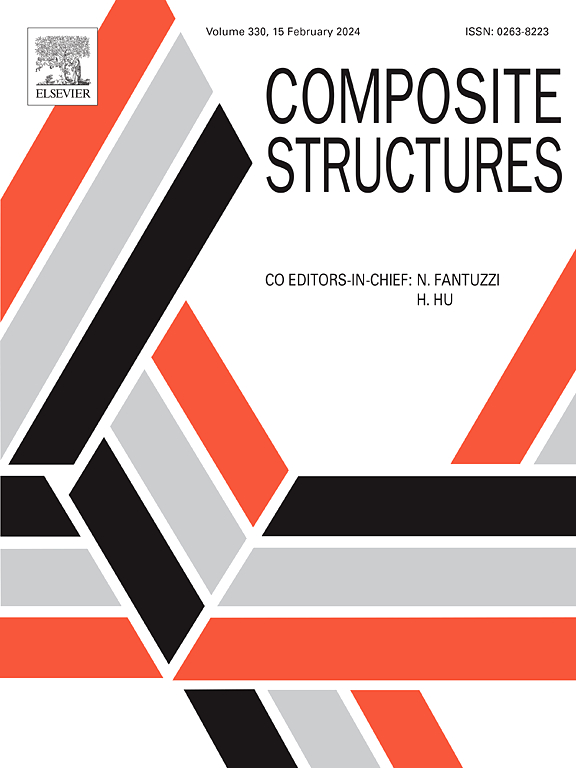Topology optimization of shell–infill structures for maximum stiffness and fundamental frequency
IF 6.3
2区 材料科学
Q1 MATERIALS SCIENCE, COMPOSITES
引用次数: 0
Abstract
Shell–infill structures, composed of the high strength shell and porous infill, have been used in lightweight design for enhancing the load-bearing and energy absorption capabilities. In this paper, we propose a shell–infill structure modeling method based on the Gaussian function and conducts multi-objective topology optimization for maximum stiffness and fundamental frequency. After two-step density filtering in the density-based topology optimization, the Gaussian function is introduced to map the intermediate densities to extract the shell. The shell thickness is controlled by the parameters of the Gaussian function and the filter radius, and their relationship is also derived. Pseudo modes are often found in eigenvalue optimization problems using the Solid Isotropic Material with Penalization (SIMP). By integrating the design variable into the penalization, we propose the Solid Isotropic Material with Variable Penalization (SIMVP) that can effectively suppress the pseudo modes. The proposed interpolation function is applied to the material model of the shell–infill structure. Numerical examples in both 2D and 3D are presented to verify the effectiveness of the multi-objective topology optimization method for shell–infill structures. Additionally, the effects of weights in the objective function, filter radius, parameters of the Gaussian function, constraints, and material properties on the optimization results are investigated.
求助全文
约1分钟内获得全文
求助全文
来源期刊

Composite Structures
工程技术-材料科学:复合
CiteScore
12.00
自引率
12.70%
发文量
1246
审稿时长
78 days
期刊介绍:
The past few decades have seen outstanding advances in the use of composite materials in structural applications. There can be little doubt that, within engineering circles, composites have revolutionised traditional design concepts and made possible an unparalleled range of new and exciting possibilities as viable materials for construction. Composite Structures, an International Journal, disseminates knowledge between users, manufacturers, designers and researchers involved in structures or structural components manufactured using composite materials.
The journal publishes papers which contribute to knowledge in the use of composite materials in engineering structures. Papers deal with design, research and development studies, experimental investigations, theoretical analysis and fabrication techniques relevant to the application of composites in load-bearing components for assemblies, ranging from individual components such as plates and shells to complete composite structures.
 求助内容:
求助内容: 应助结果提醒方式:
应助结果提醒方式:


